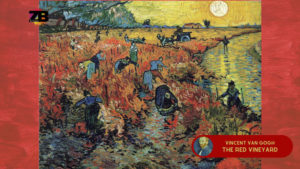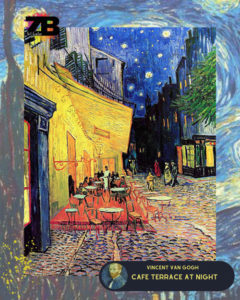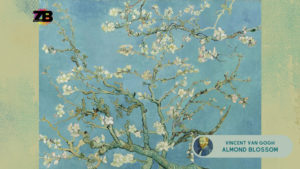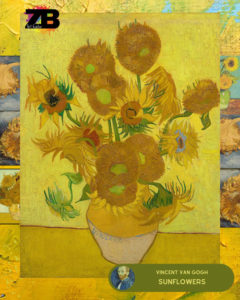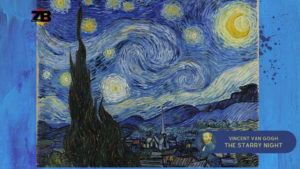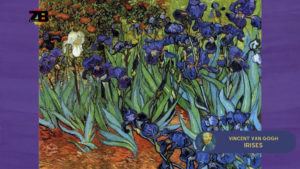Vincent Van Gogh
- Birth and Family Life
- Van Gogh’s Carrer
- Painter’s Mental Health and Death
- Van Gogh’s Work
- Best Art Reproductions of Van Gogh
Birth and Family Life
On the 30th of March, 1853, in Groot-Zundert, Holland: a region in the Netherlands very close to the Belgian border. Vincent Willem Van Gogh was born. He was supposed to be the second child to his parents Reverend Theodorus Van Gogh, who was a devout pastor and Anna Carbentus Van-Gogh, who supported her husband’s ministry work and was an active member of the community, as well as a homemaker and artist herself. They were supposed to have their first child in 1852, But some pregnancy complications led to a stillbirth, thus making Vincent the first born, also taking his late brothers’ supposed namesake.
After his birth came five other siblings to whom he was very close to despite the fact that he did not have many friends outside his family.
Anna Cornelia Van Gogh
The second child following Vincent. Although they seemed to be on good terms, Anna lived in England for most of her life beginning with boarding school in the year 1874. She eventually found a job, got married and had two children.
Theodorus Van Gogh
Other than being his younger brother, close friend and confidant, Theo contributed a lot to Vincent’s success. He grew up to be an art dealer, and helped Vincent devote his life to his art. He also offered to house him and give his brother financial support during his most trying times.
Elisabeth Huberta Van Gogh
Lies was a poetry and prose writer who wrote a book about her brother, Vincent Van Gogh. Personal Reminiscences of an Artist, which was published in 1910. There were a number of discrepancies in this book that made it quite controversial. .
Willemina Jacoba Van Gogh
Vincent’s younger sister. A nurse and a feminist who dedicated her life to establish the Dutch National Bureau for Women’s work. In fact, she was so dedicated to her calling that she never married. Sadly, her mental health quickly declined and she died in a psychiatric institution in 1941 at age 79.
Cornelious Vincent Van Gogh
Unlike Theo, Vincent’s youngest brother Cor did not join the art world. Instead, he worked as a civil servant for the Netherlands South African Railway Company after spending a few years in Johannesburg where he worked in a factory. He also volunteered at the Anglo-Boer War, where he reportedly died in the year 1900.
Van Gogh’s Career
Between the years 1860 and 1880, Vincent began his career in art after two failed romances, which may have inspired and strengthened his calling for art and his search for deeper meaning. He studied Art in Belgium.
In 1886, he moved to Paris, France to join his younger brother Theo, who was then a gallery manager and art dealer. While studying and being in the industry, he met some great impressionist painters like Monet and Gauguin, who he was completely inspired by. These were the times where he moved from imitating the style of some great artists, to developing his own style, with light and bright palettes and short brush strokes which made impressionist art was it is today
It was in the year 1888 when he moved to Arles, a commune in the south of France and founded an art institution called The Yellow House, also known as The Street. The house was located in the right wing of the 2 Place Lamartine structure in Arles, where Van Gogh rented four rooms in the hopes of creating a commune of modern artists. The Yellow House is also one of his paintings which you will find in his list of works.
Sadly so, he created some of his best works over the final years of his life. Little did he know that despite his struggles, he would be one of the most well known post-impressionist artists of all time.
Did He Really Go Insane? Van Gogh’s Mental Health and Death
Let’s begin this chapter in the year of 1888, after making the big move to Arles with some of the greatest artists of all time backing him up, Vincent’s mental health began to decline.
He had numerous nervous breakdowns and bouts of insanity. One of which is his famous argument with Paul Gauguin, where Van Gogh tried to attack Gauguin with an open razor blade, which resulted in him cutting off a portion of his own ear.
He then received treatment and was sent to an asylum for the mentally ill in St. Remy under the care of Dr. Paul Ferdinand Gachet, a doctor who was a big fan of impressionist art. In fact, he had one of the greatest collections of impressionist art according to some personal accounts.
Despite everyone’s best efforts to encourage Van Gogh’s physical and psychological healing, he only continued to decline until he committed suicide in 1890 at the age of 37 by shooting himself with a single gunshot.
Despite not being able to save Vincent from himself, he and Van Gogh became good friends and confidants, and Van Gogh even painted a portrait of Dr. Gachet, his daughter and his home.
According to a letter from Theo Van Gogh addressed to their mother Anna after Vincent’s death, “Dr. Gachet and the other doctor were exemplary and have looked after him well, but they realized from the first moment that there was nothing one could do.”
Van Gogh’s Work
Vincent Van Gogh’s greatest works were produced in a period of less than 3 years. Being one of the most well known artists of all time, you would be surprised and even saddened to know that he did not experience much of his hard-earned success while he was alive. The facts are he only ever sold one painting while alive. He was financially challenged, malnourished, and not psychologically fit to work alongside other artists. His main expenses other than his medical care would have been art supplies, coffee and cigarettes.
Art Style and Technique
Being a post-impressionist, color seemed to be the main attraction of his works. His transition to a dark to a more light and vibrant color scheme was one of the defining moments of his career. His unique brush stroke which created surface tension, accompanied by the vibrance of color gave an intensity that was in effect, both dramatic and imaginative. Perhaps this was his effort in adding more life to his dark and depressed soul.
“People say – and I’m quite willing to believe it – that it’s difficult to know oneself – but it’s not easy to paint oneself either.”, says Van Gogh.
Self Portraits
All in all, there are around 36 self-portrait paintings of Van Gogh himself between 1886 and 1889. It clearly showed that the late artist had red hair in his head and face, piercing green eyes and quite a lanky physique.
The number of his self-portraits were quite a lot as he was really inclined to painting people, but did not have enough resources to hire models. Therefore, he often chose to paint himself. His first existing portraits of himself came out in the year 1886. He never seemed to show a painting of himself smiling, which was very reflective of his mental state. He has also painted himself smoking off a pipe, and 2 portraits of him displayed a bandaged ear which he got from an incident of violence from the year 1988.
His first ever self-portrait “sketch” known to man (1886)
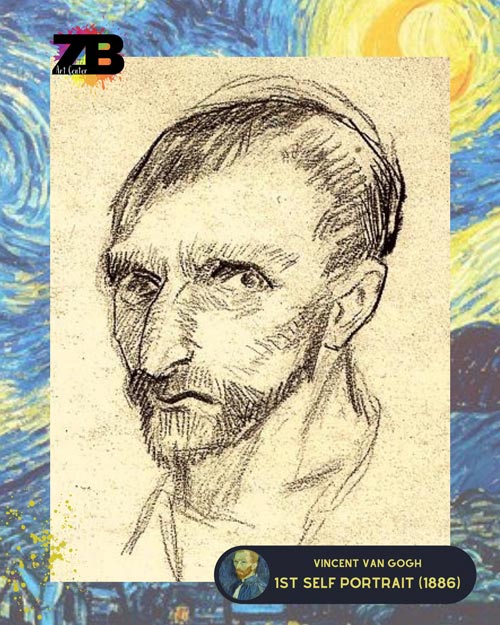
A simple black and white drawing with minimal detail of two faces, both of Van Gogh.
Vincent in a dark felt hat in the easel
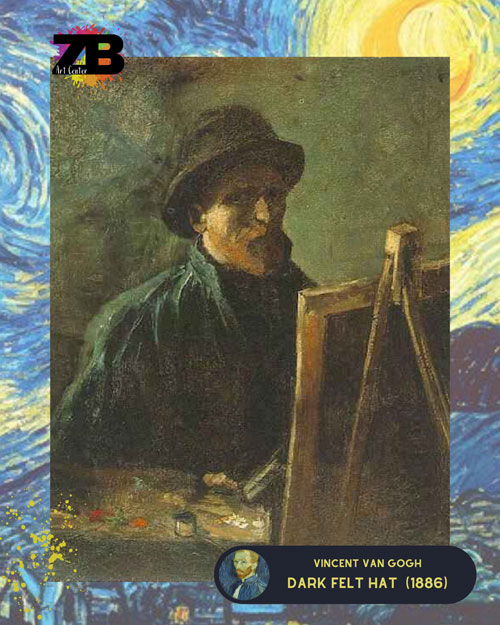
This showed Van Gogh in the act of painting in the dark, with a great amount of shadow covering his face.
Self Portrait with a straw hat
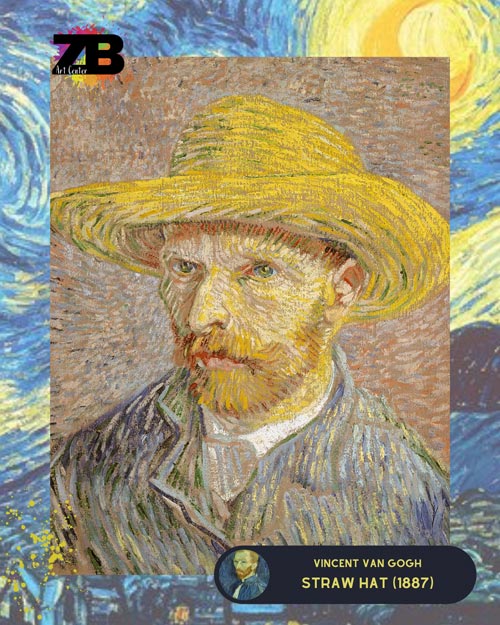
One of Van Gogh’s more popular self portraits.
Self portrait with a bandaged ear with a Japanese inspired painting
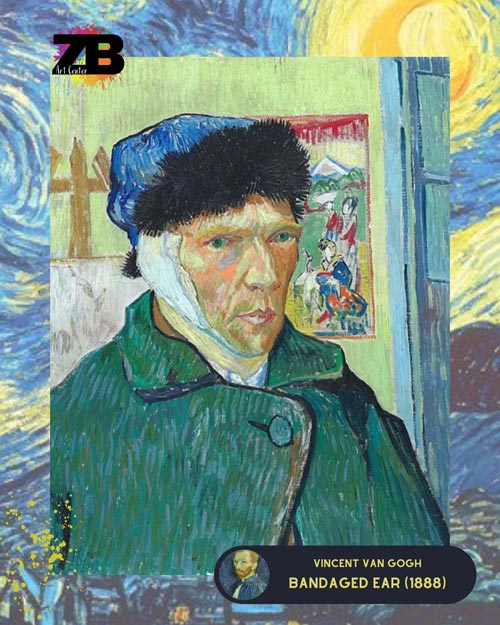
This was painted after he actually cut off a part of his own ear while in a state of confusion from an incident of violence from the year 1988.
What must have been his last self-portrait
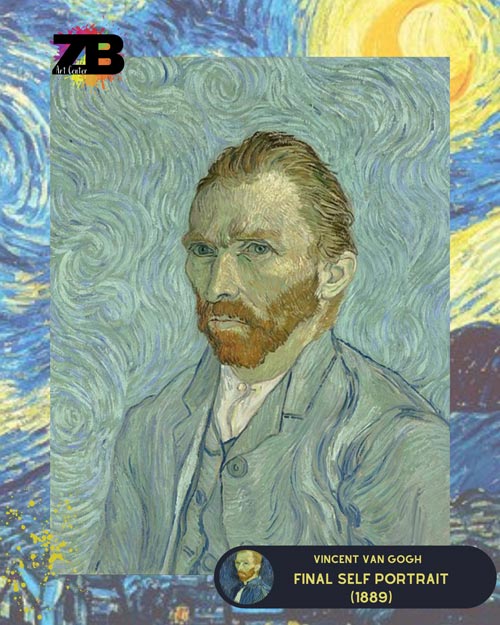
Painted in Paris, showing an eerie image of a very pale Van Gogh with detailed strokes on his skin and his clothes, which were blending in with the background.
How many paintings did Van Gogh paint in his lifetime?
He was known to have made around 2,100 artworks. including 36 self portraits over the span of 10 years, and 860 oil paintings which were all made during the final years of his life.
Vincent was truly a fan of nature, which is evident in his work. He also tried to paint people, mostly himself as he did not have much muses or connections at that time.
Van Gogh covered the art periods of Post-Impressionism, which he is most known for. He also had works heavily influenced by realism, modern art, impressionism, japonisme, cloisonnism, pointillism and neo-impressionism.
Why was the color yellow apparent in most of his best work?
Yellow was said to be the late painter’s favorite color. In his work, he used shades of yellow to tie his pieces together. Giving it what would be his signature look. He respectively used the shades yellow ochre, cadmium yellow and chrome yellow for his oil paintings in different stages of his career.
Although, there have been some rumors that developed over the years that link Vincent’s love for the color yellow to drugs and his mental health. It was said that one of his physicians, Dr. Felix Rey, recommended Van Gogh to take digitalis, a herbal drug that helps with heart problems. Van Gogh took this to get rid of anxiety attacks which led to some really bad seizures.
The problem with this drug is that it is strongly linked to Xantopia, a vision deficiency which causes a part of one’s eye, the optical media to turn slightly yellow in color, leading to impaired vision with a predominance of the color.
Whether it was Van Gogh’s fondness of the color yellow or a drug-related issue was not completely verified in the records. But it did help in making his art more distinctive and unique to him.
Van Gogh’s paintings
Van Gogh had over 860 oil paintings throughout the course of his life. A lot of them being of still life, nature scenes with some Japanese inspired themes, which seems to be a well-known factor of his works. Here I’ll list some of the most known.
Starry Night
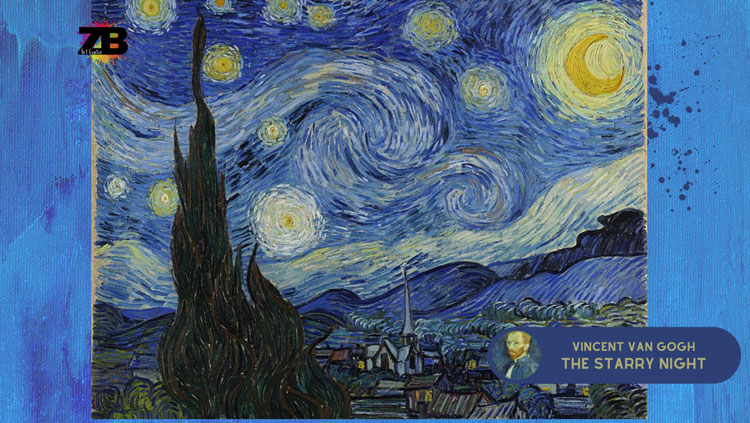
Probably Van Gogh’s most popular work of all time with several art reproductions and is now worth over $100 million dollars. Unfortunately, all this success came about after Van Gogh’s death.
Sunflowers
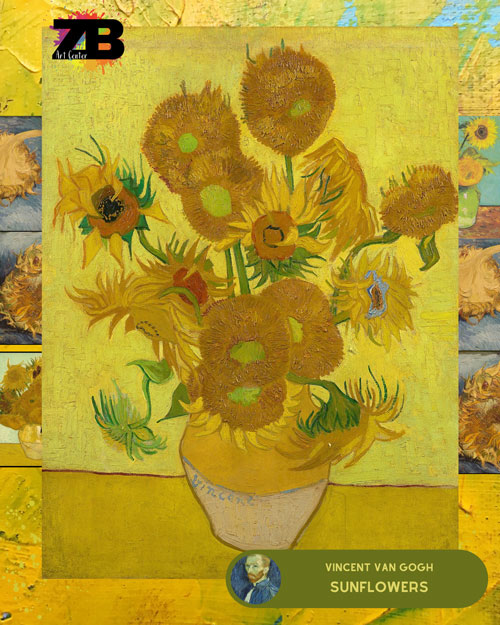
Van Gogh painted a lot of nature scenes and portraits, especially flowers. Over 15 different paintings of his work are of sunflowers.
Almond Blossom
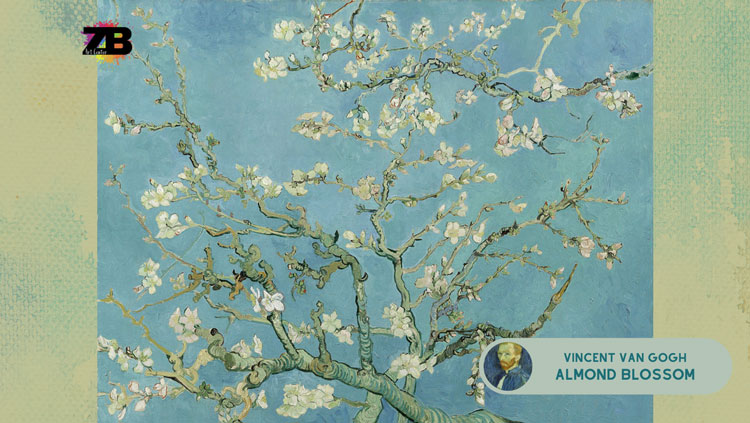
Almond Blossom is from a group of several paintings made in 1888 and 1890 by Vincent van Gogh in Arles and Saint-Rémy, South of France.
Cafe Terrace at Night
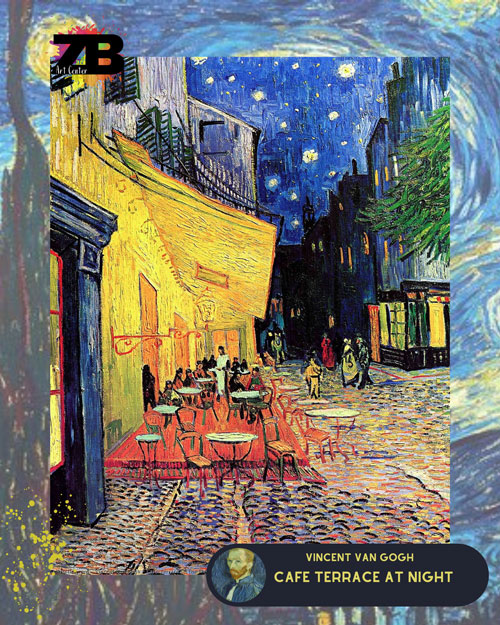
Painted in 1988, this is another vibrant and emotion-envoking piece by Van Gogh.
The Red Vineyard
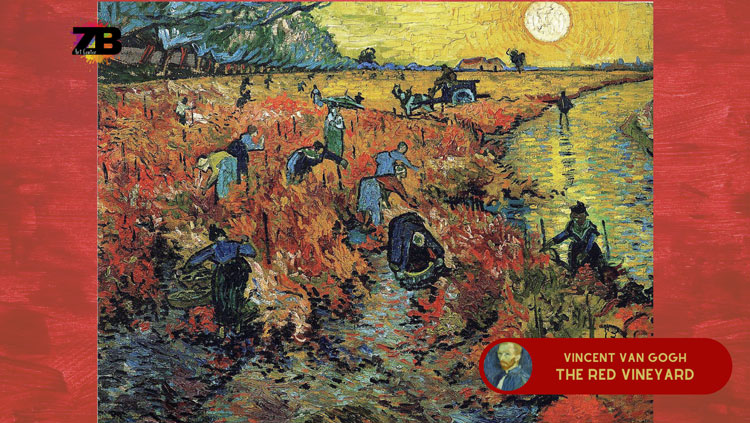
Located near Arles in the south of France, this local vineyard has been immortalized by Van Gogh. This shows some Japanese art inspiration.
Irises
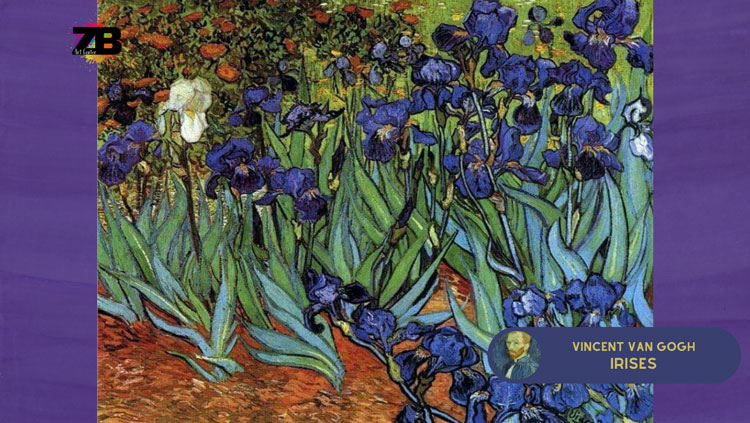
Van Gogh’s favorite subject in isolation at the Saint Paulde Mausole Asylum in St. Remy.
Art Reproductions of Van Gogh you can buy online
Van Gogh’s career reached a tragic end, and it is a fact that the majority of Van Gogh’s worth and the appreciation of his work only started coming into light after the painter’s death. Still, Vincent Van Gogh became one of the most famous icons of art in the entire world. There are thousands of replicas and reproduced paraphernalia of the late painter’s art, in different forms, sizes and price ranges.
Want to secure a beautiful Van Gogh replica for your space?
View our list of Van Gogh reproductions:

